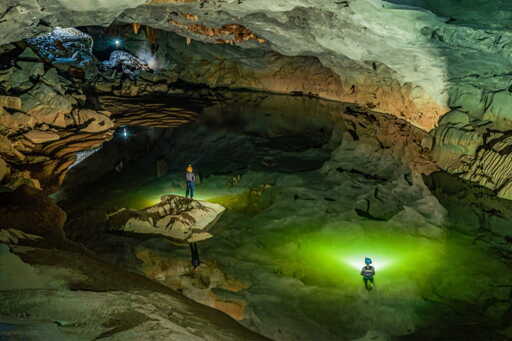Thirty-five years ago, a Vietnamese hunter stumbled across the biggest cave on the planet — then promptly lost it. Hồ Khanh was deep in the 400-million-year-old karst limestone landscape that straddles central Vietnam and Laos. Beneath Hồ’s feet lay wet cave systems that spanned hundreds of kilometers, but his focus was on the tangled jungle above. Here he hunted slow lorises, which he hawked as pets, and pangolins, whose scales are used in traditional medicine (and which perhaps helped spread COVID-19 from bats to humans). What he prized most, however, was agarwood, a rare, valuable and fragrant heartwood that could be carved into ornaments or burned as incense. When a sudden storm broke, Hồ slipped into a cave for cover. The hammering rain blurred the world into noise, yet it couldn’t drown out the blustering chambers from the cave’s dark depths. When the skies cleared, Hồ resumed his hunt. With time, the memory of this small crack in the mountain dimmed, and Hồ returned to his primary income source: looting the jungle. “Back then, we barely saw any wildlife,” recalls Howard Limbert, who began exploring the wilderness’s caves with his wife, Deb, in the 1990s. After several expeditions with the British Caving Association (BCA) in what became Phong Nha-Kẻ Bàng National Park in 2001, the Limberts were convinced that the region concealed vast, unknown caves. In 2007, when they heard Hồ’s story of a narrow opening that led to howling chambers, their curiosity was piqued. The three struck up a…This article was originally published on Mongabay
From Conservation news via this RSS feed


